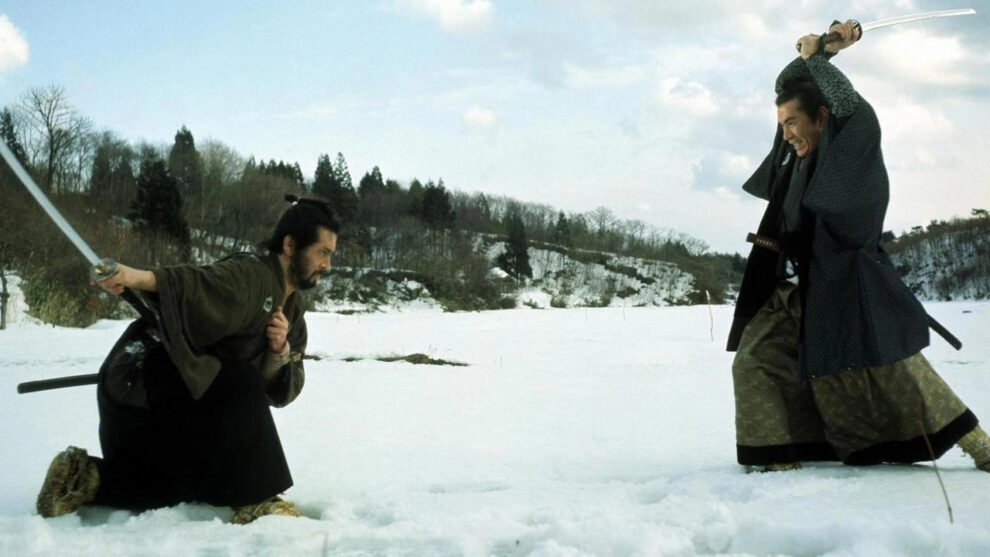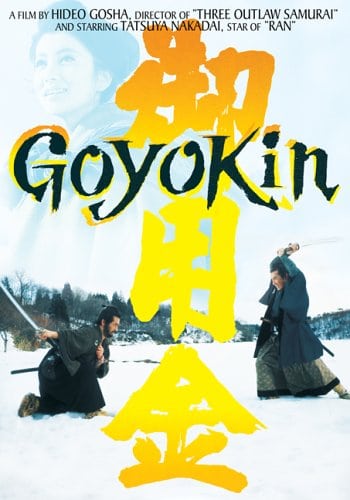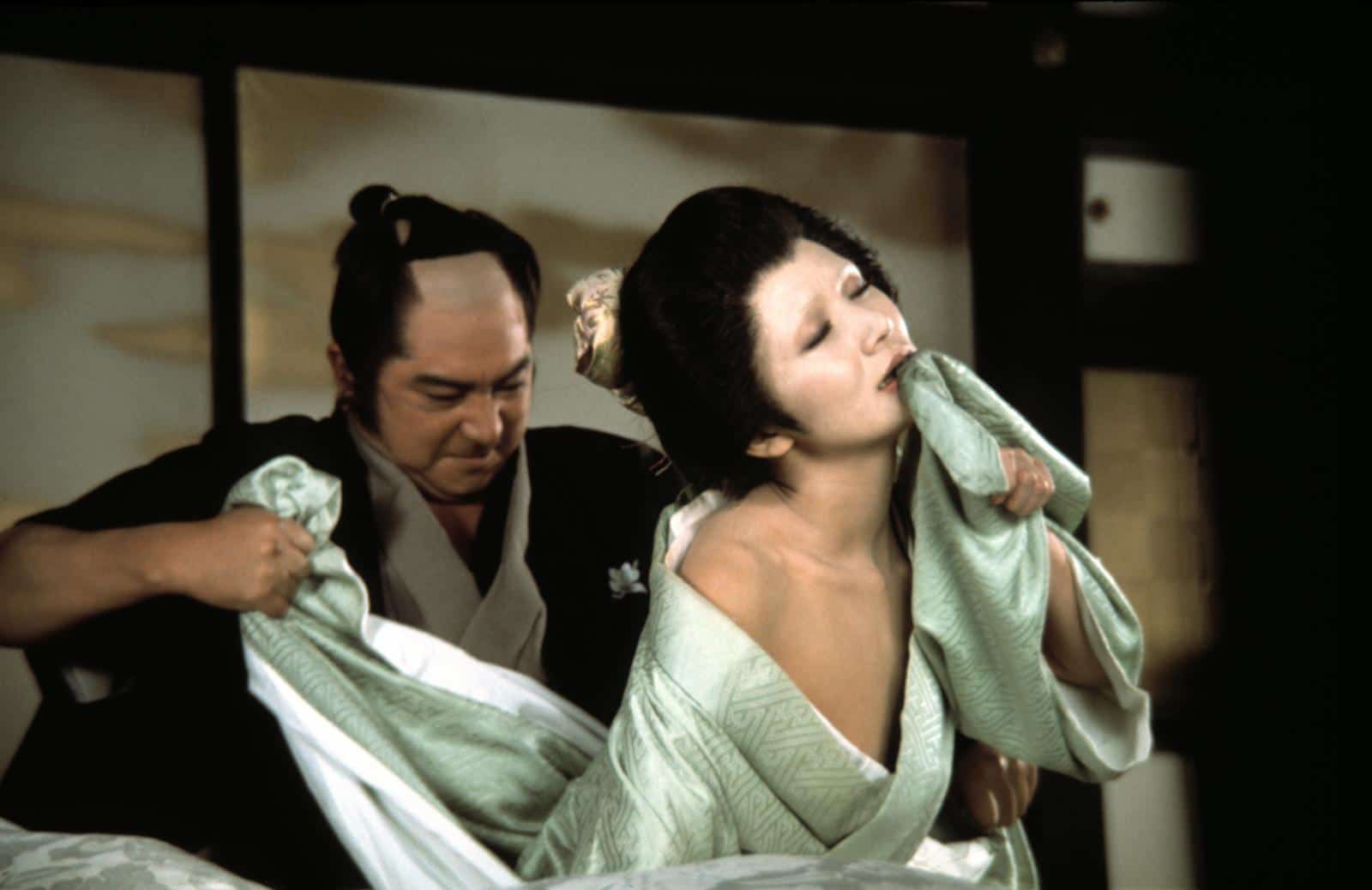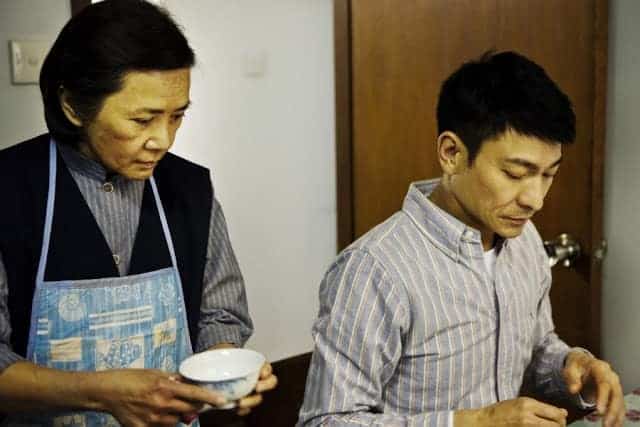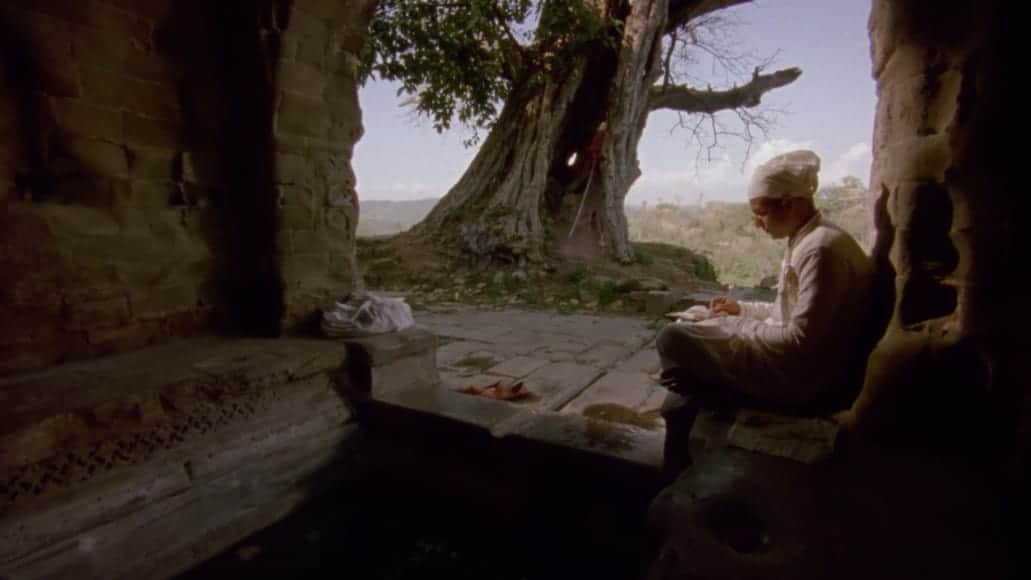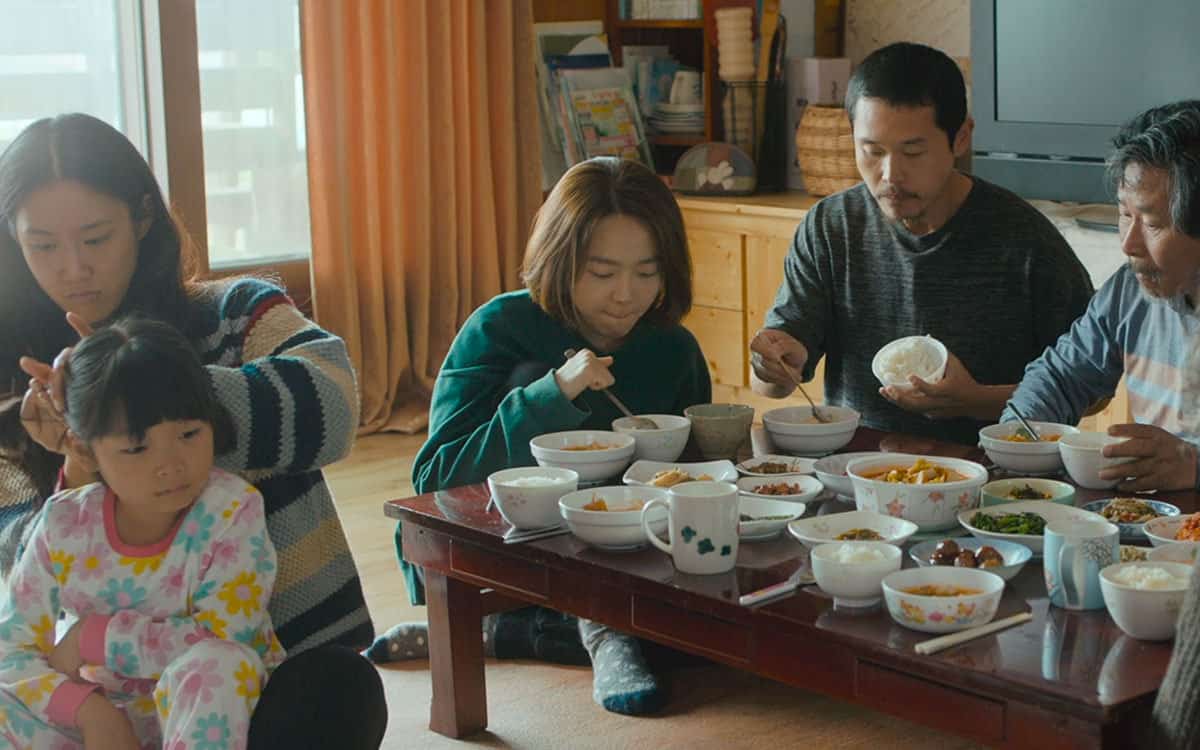“Goyokin,” which translates to “Official God,” is perhaps Hideo Gosha's finest film. Written by Gosha and Kei Tasaka, many of the director's regular players, including Tatsuya Nakadai and Tetsuro Tamba, star here. Toshiro Mifune was initially cast as the character Samon Fujimaki. However, production difficulties resulted in him being replaced by Kinnosuke Nakamura. “Goyokin” was a critical and financial hit upon release and remains a highly regarded piece of Japanese cinema.
In snowy feudal Japan, Sado Island is home to gold mines that provide riches offered to the Tokugawa clan via ship delivery, which can be jeopardized due to poor weather on the waters. Meanwhile, a reclusive samurai named Magobei Wakizaka wanders, clearly troubled by something. The ronin finds himself the target of an assassination attempt, which he survives. He learns this attack was orchestrated by his former clan master, brother-in-law, and childhood friend, Rokugo Tatewaki. Magobei formally served the Sabai clan, whose poor treatment by the Bakufu brought them close to ruin, pushing their leader to snap. Broken, Rokugo murdered innocent villagers who tried to return recovered gold from a shipwreck and took the riches to preserve the clan's chances for survival. Magobei witnessed, and not wanting to see his lord fall, he remained silent. Now, his headman plans to commit the same atrocity again. Learning this, the lead plans to confront his old companion to prevent the massacre from happening, along with the help of a woman named Oriha and her brother Kunai, who survived the first mass murder incident. Eventually, they receive additional help from a nosy samurai named Samon Fujimaki. Additionally, the main character reunites with his wife and Rokugo's sister, Shino.
Perhaps there are familiar tropes, but “Goyokin” isn't a shameless rehash of exhausted plot threads. There's plenty to appreciate beyond its awesome action scenes. A tightly written script effectively weaves a haunting story of a man's guilt tormenting him, resulting in confrontation and a chance for redemption. Even when the central conflict becomes clear, the narrative is still full of surprises as the mystery gradually unfolds and morality becomes more grey. The winter season, while beautiful, emphasizes the melancholy feel, as if the heavy snow and harsh weather have trapped these characters in a desperate tangle for survival.
Additionally, the film examines morality and corruption through the perspectives of its characters. Magobei isn't a macho protagonist, being heavily flawed and vulnerable. He begins as a pitiful recluse skilled with a sword who drowns his sorrows in alcohol. Yet, once assassins are out to get him and innocent lives are threatened, he gradually rejuvenates his humanity by helping protect others while living with his past errors. The people he meets play a big role in his humanistic journey. Rather than a standard villain driven by greed, Rokugo Tatewaki is a broken man, walked over and disregarded by a system that failed him and his men when they needed help. Desperate to preserve their survival, he has thrown away his humanity and resorted to bloodshed as a last resort. Now, he feels this is what he must do moving forward. The writing greatly balances adding tragedy to his backstory while still not excusing the person he's become and his horrific atrocities. The samurai, Samon Fujimaki, questions his path and loyalty to government authority through this conflict. Rather than telling a standard good vs. evil story, Hideo Gosha showcases the survival of the fittest type of environment where despair and violence unravel, all while the government engages in its self-indulgence, disregarding the well-being of those around it.
Great acting from a cast that plays off one another enhances the experience. Tatsuya Nakadai gives Magobei Wakizaka a commanding presence yet successfully shows the character's more vulnerable side. Tetsuro Tamba is delightfully villainous as Rokugo Tatewaki but also knows how to insert a level of tragedy into him. Ruriko Asaoka shines as Oriha, whose strong will to live and concern for others keeps her going, like her brother Rokuzo, played by Ben Hiura. Kinnosuke Nakamura makes Samon Fujimaki charismatic as ever in his progression from a loyal follower to a freethinking individual. Through all this aggression, Yoko Tsukasa dials things down for her portrayal of Magobei's wife, Shino, representing happier times and someone who wishes for those comforting memories to become a reality again one day.
Superb costume design and set pieces are on display in “Goyokin.” Prominent are the various beautiful atmospheric locations; one can only imagine how difficult shooting was in the cold, snowy outdoors. Being the first Japanese film production shot in Panavision, cinematographer Kozo Okazaki doesn't disappoint. Also impressive is the sound design and editing, and Masaru Sato's music score is excellent. Regarding samurai fights, Hideo Gosha consistently delivered, and here is no exception. The action in “Goyokin” is spectacular. On top of the sheer brutality and intensity of these fight scenes, the choreography is outstanding.
“Goyokin” is excellent, delivering entertaining action and reeling viewers in with an engaging narrative. It is made more captivating thanks to memorable characters brought to life by stellar performances. Between this feature and his other jidaigeki picture released a few months later, “Hitokiri,” 1969 was quite a year for Hideo Gosha.


